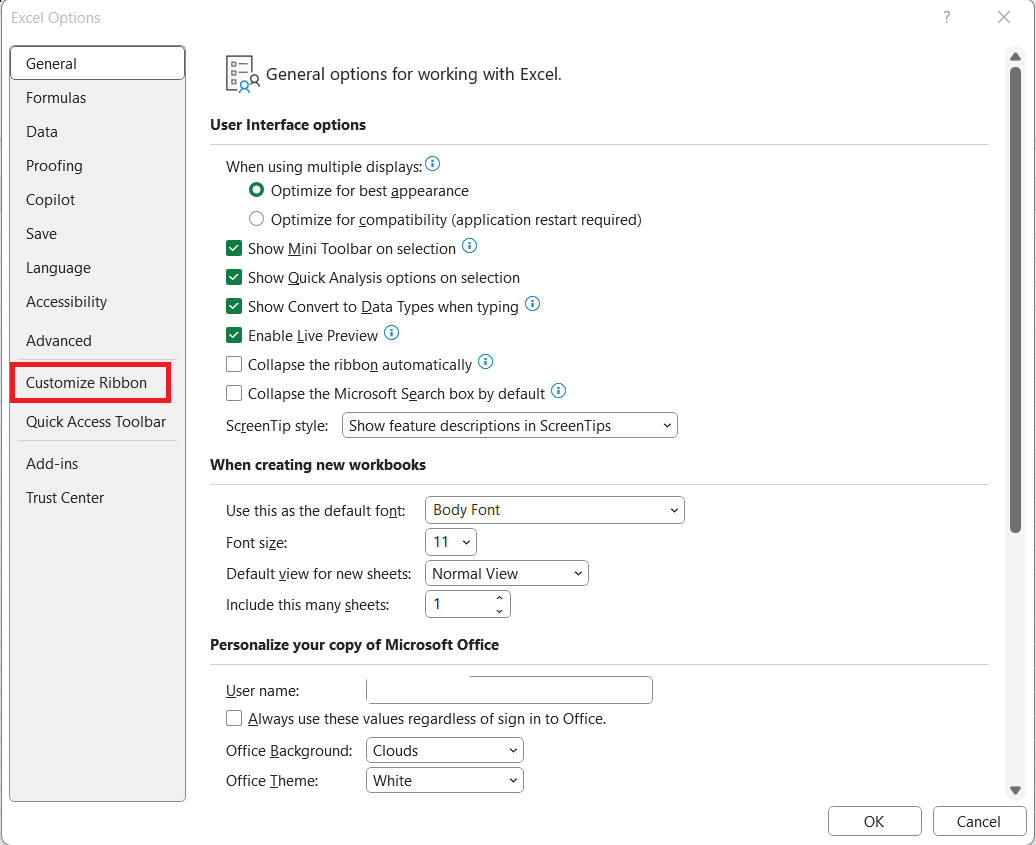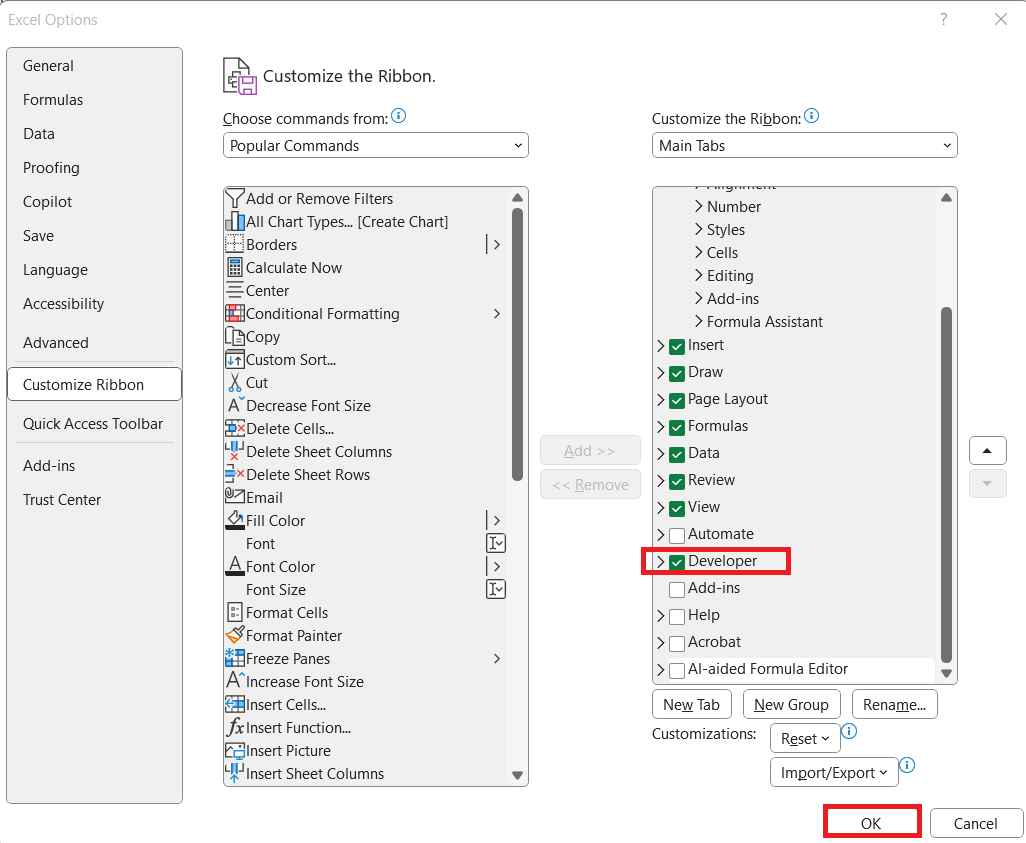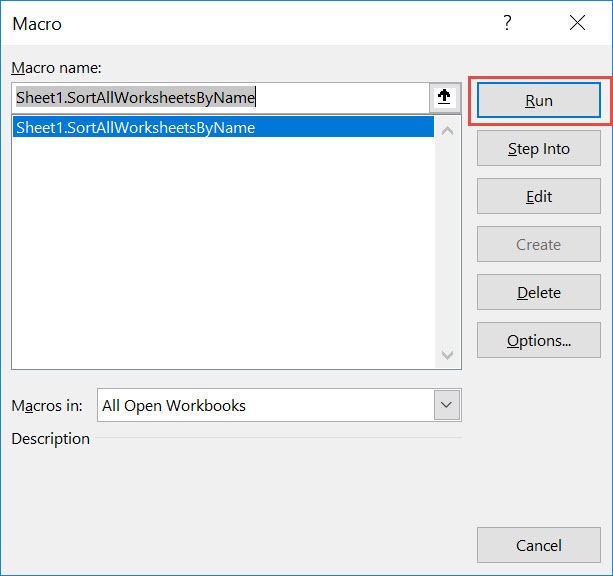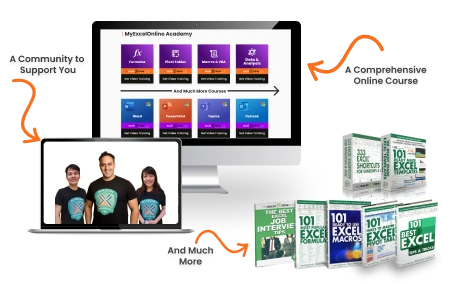Have a lot of worksheets, but the worksheet names are arranged in a random order? It will be a pain moving the sheets one by one to sort them out! You can sort all worksheets by name using Macros in Excel! With a simple macro, you can sort all worksheets by name in a matter of seconds.
In this article, we will explore exactly how to use Macros in Excel to sort your worksheets alphabetically. Even if you’ve never used Macros before, don’t worry—I’ll walk you through it step by step.
Key Takeaways:
- Sorting worksheets manually can be time-consuming and error-prone.
- Macros in Excel automate the process of sorting sheets alphabetically.
- The Developer tab is required to access and run macros.
- The provided macro uses a simple loop to compare and move sheet names.
- Sorting sheets improves navigation, presentation, data consistency and saves time.
Exercise Workbook:
Table of Contents
Benefits and Functionality of Sorting Worksheets
Why Sorting Worksheets Is Important
Before we dive into the technical steps, let’s understand why sorting worksheets is useful:
- Easier Navigation: When your sheets are in alphabetical order, finding a particular sheet is quicker and less stressful.
- Professional Presentation: For workbooks shared with colleagues or clients, organized worksheets make your workbook look professional.
- Data Consistency: When analyzing or reporting data across multiple sheets, having them in a predictable order reduces errors.
- Time Saver: Instead of manually dragging sheets, a macro can perform the sorting instantly, saving you significant time.
What This Macro Does
The macro we’ll use in this guide will:
- Go through all worksheets in your workbook.
- Compare their names alphabetically.
- Automatically move them so that the names are in ascending alphabetical order.
With this macro, you no longer have to manually drag sheets or guess their correct positions. It’s a one-click solution for a common headache.
How to Sort All Worksheets Using Macro
Enable the Developer Tab
To use macros in Excel, you must have the Developer tab enabled. If you haven’t done this yet, follow these simple steps:
STEP 1: Click on File > Options > Customize Ribbon.
STEP 2: On the right side under “Main Tabs,” check the Developer box. Click OK.
Now, the Developer tab will appear in your Excel ribbon, giving you access to VBA (Visual Basic for Applications) tools, including macros.
Step-by-Step Guide
STEP 1: Go to Developer > Code > Visual Basic
STEP 2: Paste in your code and Select Save. Close the window afterwards.
Sub SortAllWorksheetsByName() Dim i As Integer Dim j As Integer 'We use two loops to sort the sheets in ascending order For i = 1 To Sheets.Count For j = 1 To Sheets.Count - 1 If UCase$(Sheets(j).Name) > UCase$(Sheets(j + 1).Name) Then Sheets(j).Move After:=Sheets(j + 1) End If Next j Next i End Sub
STEP 3: Let us test it out!
Open the sheet containing the data. Go to Developer > Code > Macros
Make sure your macro is selected. Click Run.
With just one click, all of the worksheets are now sorted alphabetically!
Tips and Best Practices
- Save a Backup – Before running any macro, it’s always a good idea to save a backup of your workbook. If anything goes wrong, you can restore your original data.
- Macro-Enabled Workbook – To save your workbook with macros, make sure to save it as Excel Macro-Enabled Workbook (.xlsm). Normal .xlsx files cannot store macros.
- Handling Hidden Sheets – The macro will also sort hidden sheets. If you want to exclude them, you can add an If condition in the code to skip hidden sheets.
- Custom Sorting – If you want to sort sheets in descending order, simply change the comparison operator in the code:
If UCase$(Sheets(j).Name) < UCase$(Sheets(j + 1).Name) ThenThis will reverse the sorting order.
FAQs
1. What is a macro in Excel, and why do I need it for sorting worksheets?
A macro is a recorded or programmed set of instructions that automates repetitive tasks in Excel. Sorting worksheets manually can be tedious if you have many sheets. By using a macro, Excel can automatically rearrange all sheet names alphabetically in seconds. It eliminates the need for manual dragging, reduces human errors, and ensures consistency. Macros also allow you to reuse the same task in different workbooks, saving even more time in the long run.
2. How do I enable the Developer tab in Excel?
To enable the Developer tab, click File > Options > Customize Ribbon. On the right side, check the Developer box under Main Tabs. Click OK, and the Developer tab will appear in your ribbon. This tab gives access to Visual Basic for Applications (VBA) tools. Once enabled, you can create, edit, and run macros, giving you the power to automate almost any repetitive Excel task.
3. Will this macro work on hidden sheets?
Yes, the macro sorts all sheets, including hidden ones. If you want to skip hidden sheets, you can modify the code to include a visibility check. Hidden sheets are often used for calculations or backup data, so sorting them may affect their order. The default macro handles them automatically unless you customize it. This makes it versatile for workbooks with both visible and hidden worksheets.
4. Can I sort worksheets in descending order instead of ascending?
Yes, you can sort sheets in descending order by changing the comparison operator in the code. Replace > with < in the line comparing sheet names. This will reverse the sorting logic. It gives you flexibility depending on your preferred order. You can also combine this with custom prefixes or naming conventions to create a fully tailored sort.
5. Is it safe to use macros on my workbook?
Macros are safe if you create or copy them from trusted sources. Always save a backup before running macros, especially on important workbooks. Macro-enabled workbooks must be saved as .xlsm to retain the code. Following these precautions ensures you can automate tasks without risking your data. Additionally, enabling Excel’s macro security settings can help prevent malicious code from running accidentally.

Bryan
Bryan Hong is an IT Software Developer for more than 10 years and has the following certifications: Microsoft Certified Professional Developer (MCPD): Web Developer, Microsoft Certified Technology Specialist (MCTS): Windows Applications, Microsoft Certified Systems Engineer (MCSE) and Microsoft Certified Systems Administrator (MCSA).
He is also an Amazon #1 bestselling author of 4 Microsoft Excel books and a teacher of Microsoft Excel & Office at the MyExecelOnline Academy Online Course.















